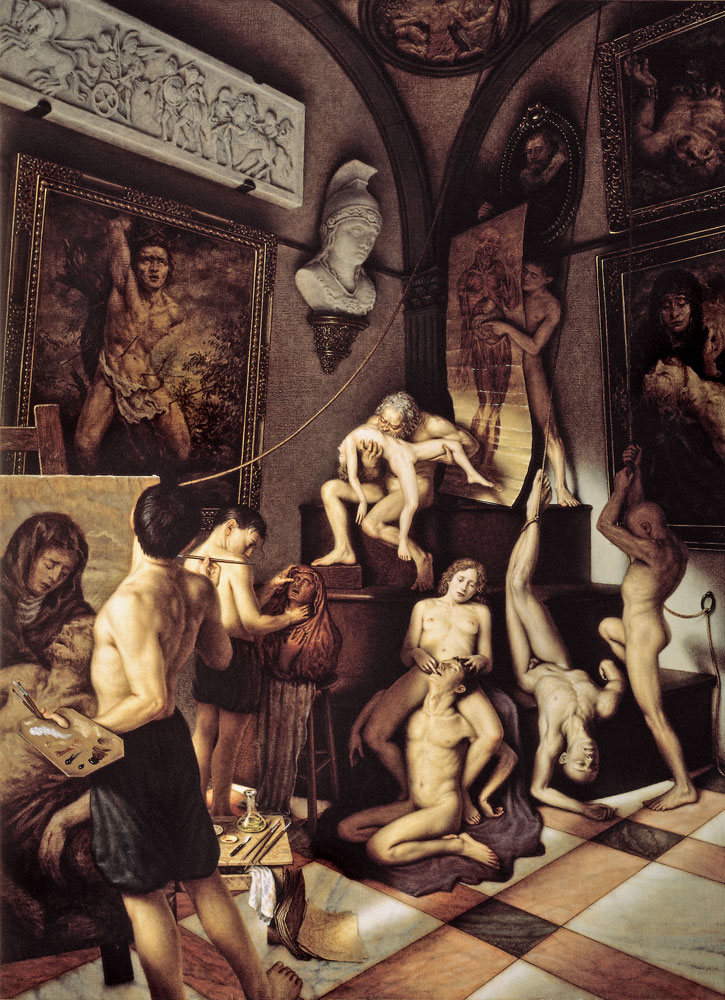
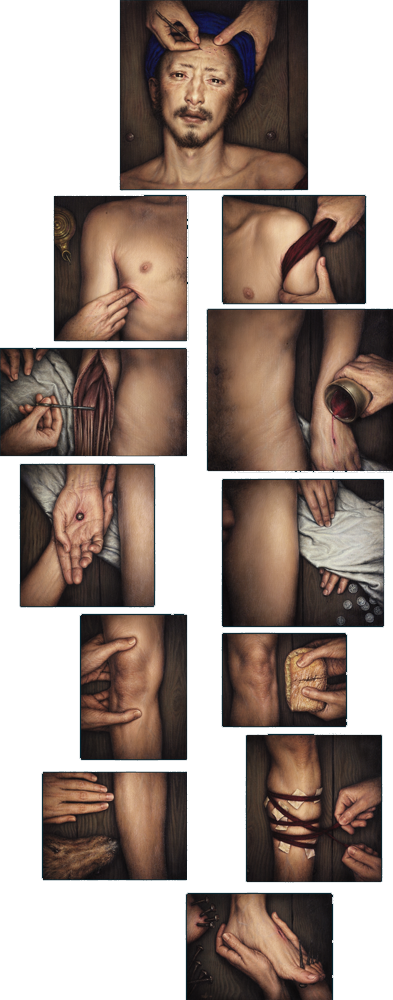
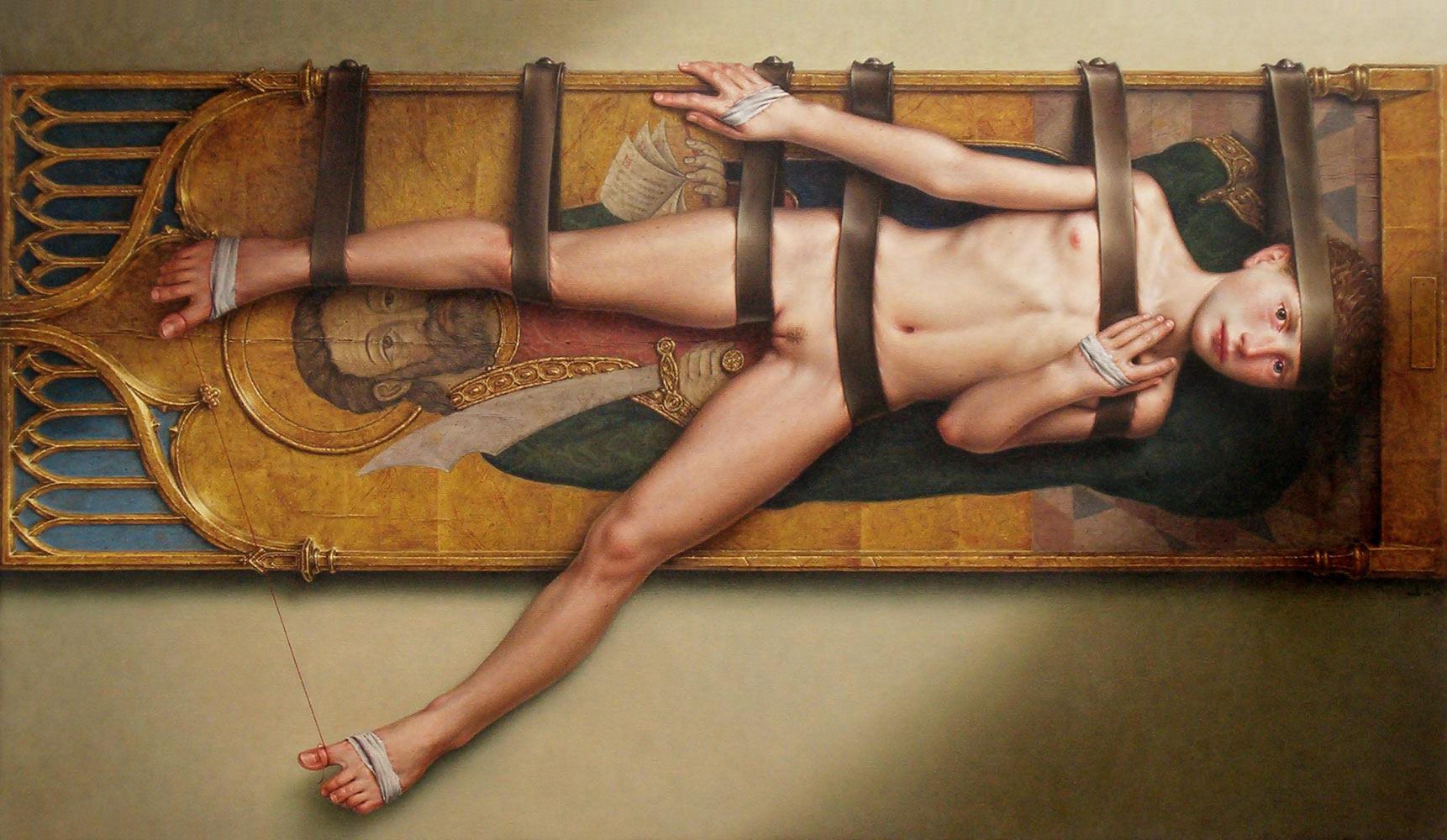

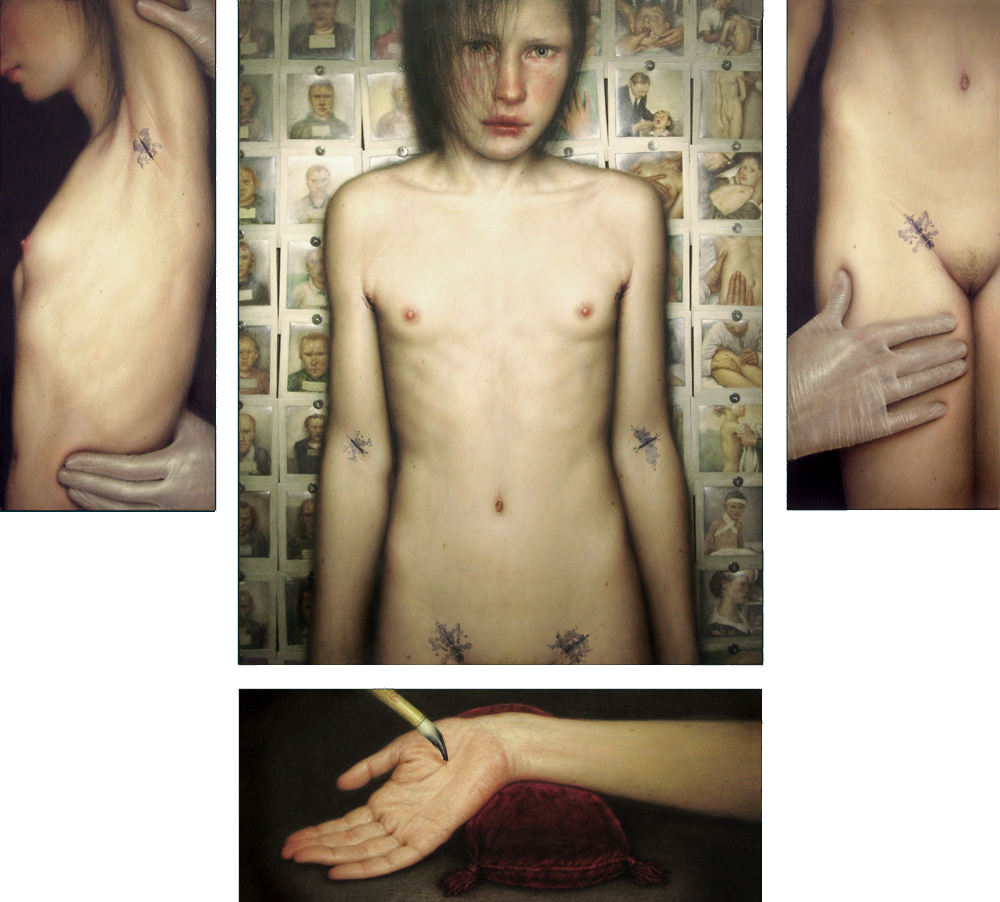
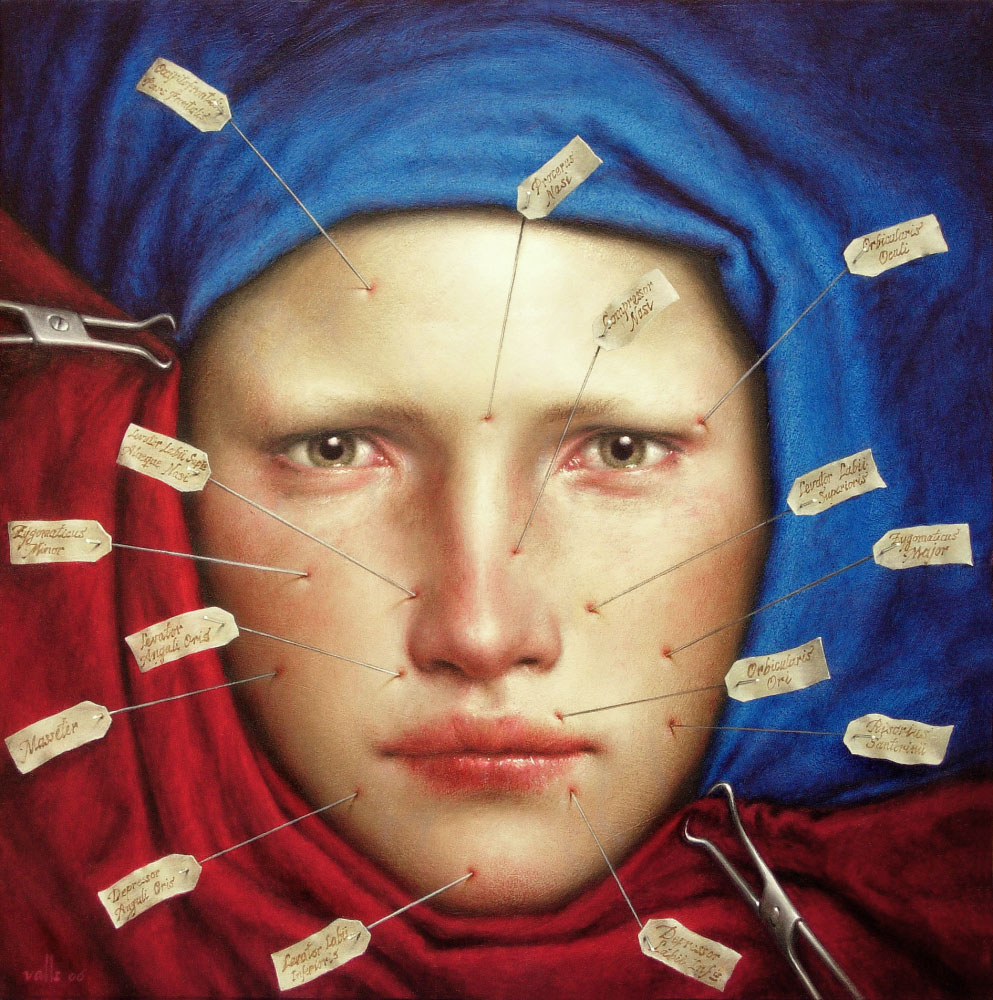
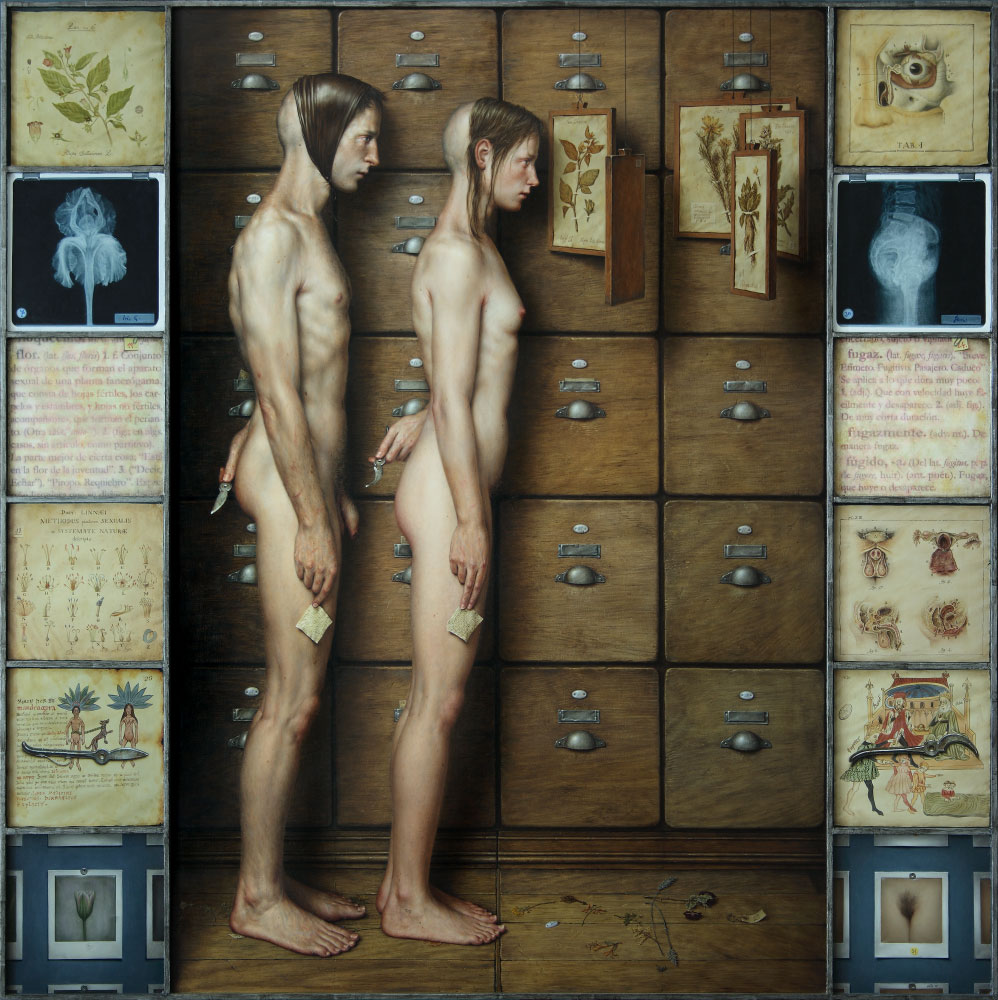
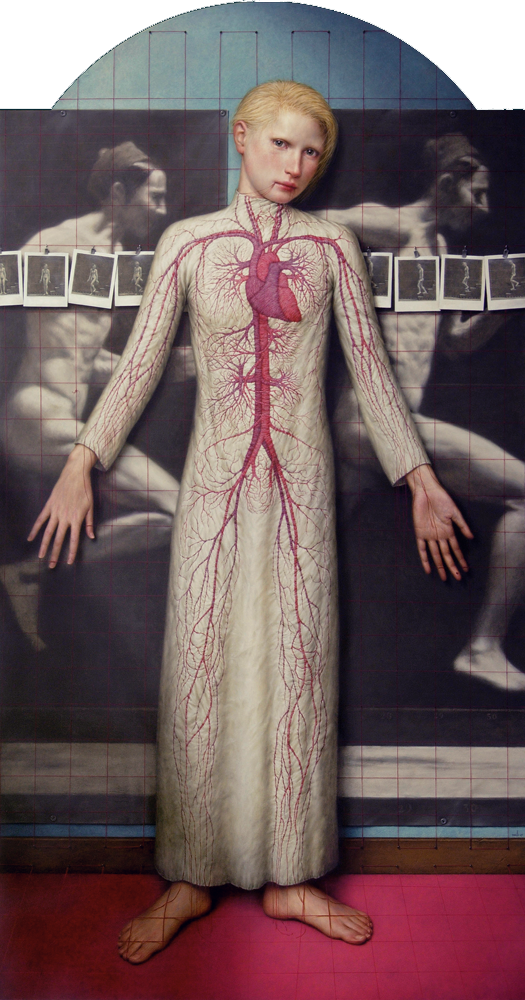
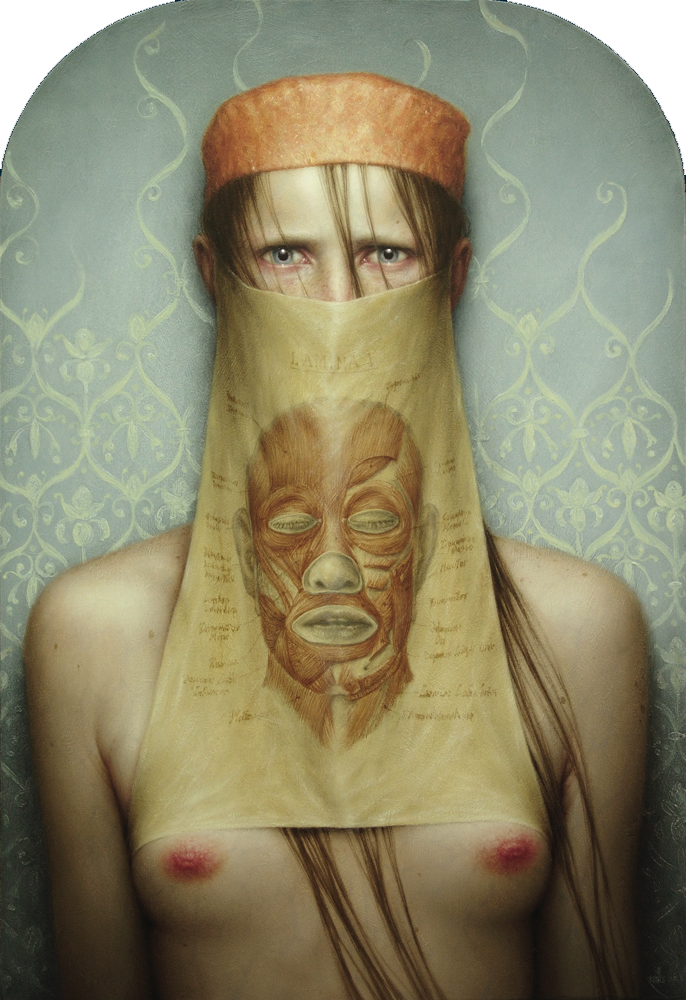
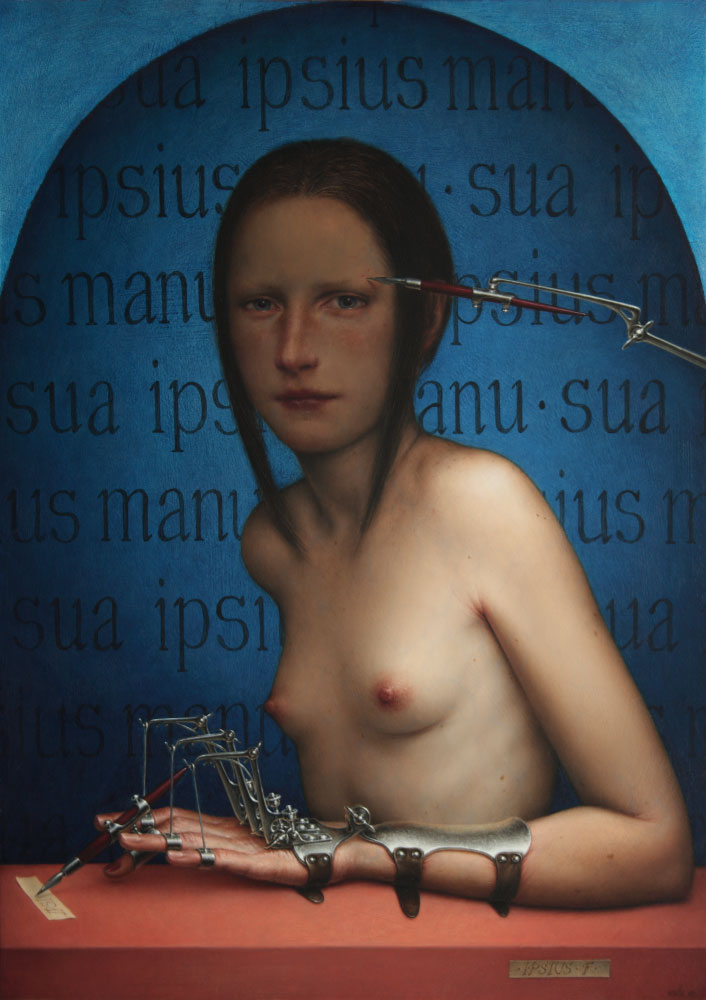
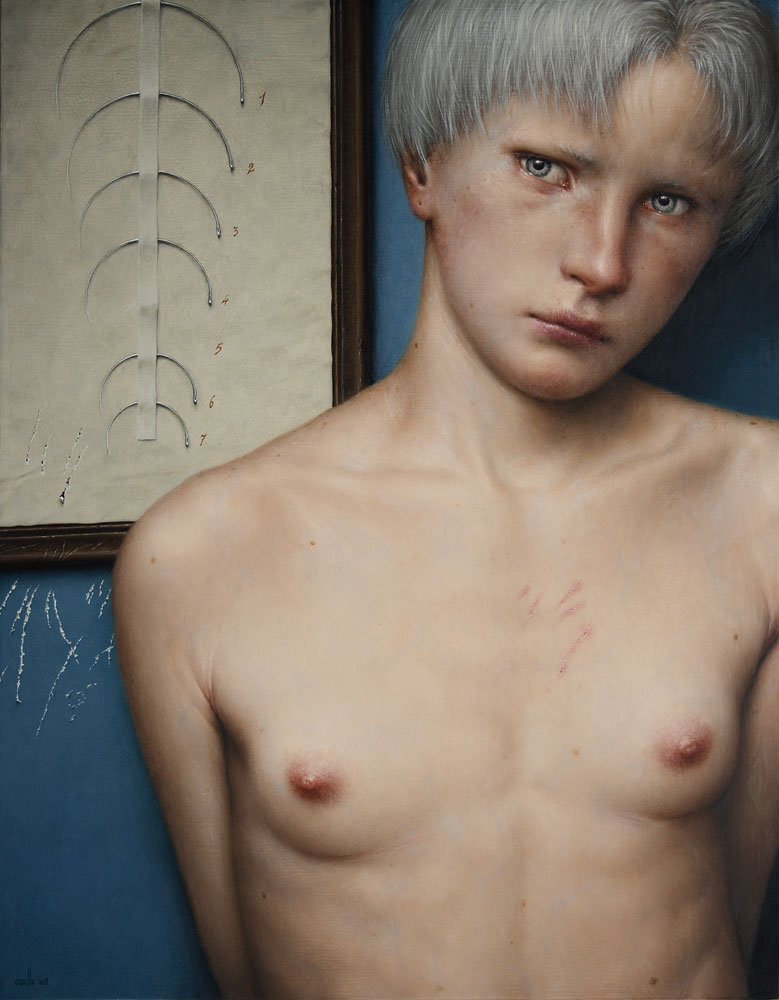
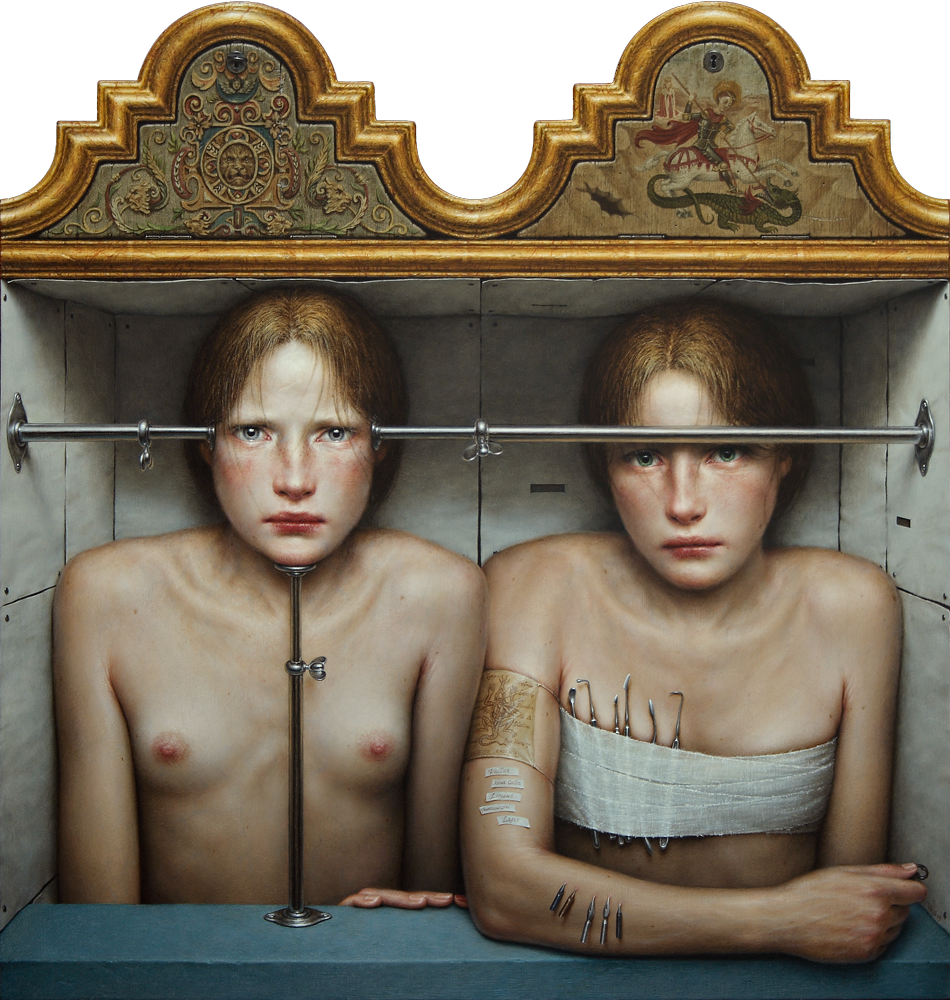
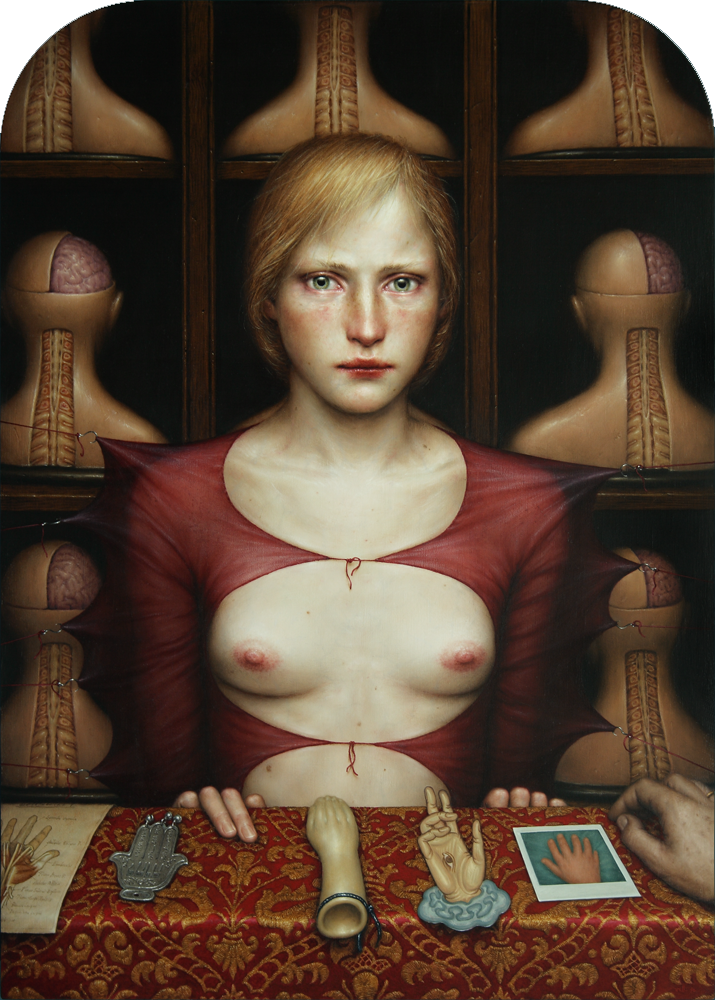
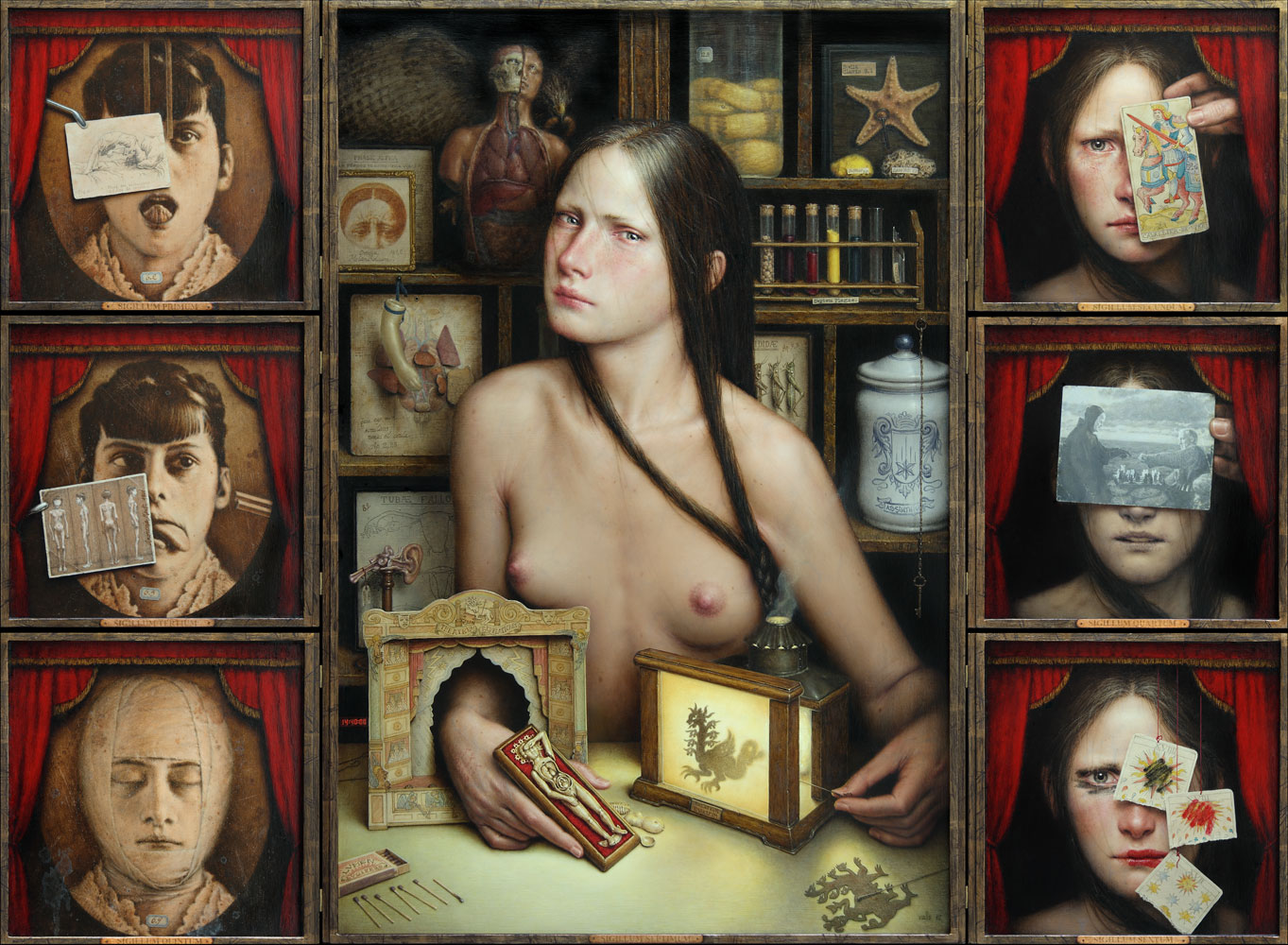
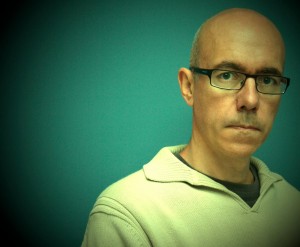
From the catalogue of the retrospective exhibition “Dino Valls: A Journey through Spanish Magic Realism“. Frissiras Museum, Athens, November 2011.
The Weight of the Unconscious
by Fernando Castro Flórez, Professor of Aesthetics and Art Theory at the Universidad Autónoma de Madrid, Art critic and curator
We could try to understand Dino Valls’ aesthetics as a form of meditation on the status of today’s subject. His paintings are reflections where anxiety has settled down, along with the painful processes of a split personality. In fact, the darkest beast lies within us. The most beautiful, even “heavenly” bodies are wounded and, through the mirror of reflection, bestow their questions upon us. It is about images in aversion, whereas faces impose the enormous, or even better, a Medusa-like kind of gaze. We are unable to escape from the disturbed or upset sight of the figures that Dino Valls paints, these eyes are focused to something that we are yet to understand, as if they expect something from us that we are unable to provide. Their symbolisms constitute allegories of the subconscious, define pulses superficially, allude to the process of transformation, and recapture the meaning of a thought that exceeds the reticulation of the rational.
(…) experts appreciate his technique and mostly what they describe as ‘immaculate brushstrokes’, an observation to which the artist responded that it is quite the contrary: “l use my painting to provide darkness, uneasiness, sadness. What I do as an artist is to explore that darkest and unfamiliar part of the human being. My painting is a way to stain the white”. What he wishes is to penetrate into a darker realm, to reflect the uneasy (under the Freudian concept of the familiar becoming foreign, in spite of oppression) and finally, to express the subconscious. Oddly enough, this penetrated by anxiety painting is exceptionally beautiful. The conflicts of life are not literally taken, nor do we recur to the rhetoric which characterizes the “culture of protest”; instead our painful condition takes an allegoric aspect, while at the same time a kind of immense power of the symbolic appears, as if art still has the capacity to fulfill an age-old “promise of happiness”. Active imagination, to use Jung’s terminology, the way it is used by Dino Valls, offers us an impressive and multiple (self) portrait where the present is sinking in tradition but also is launched towards the imaginary, the utopia of what we see comes to friction with the enigmatic presence of gazes that seem to be more vibrant from all of those that we come across continuously. A dissection of the subconscious through nude bodies, skin that might be the most profound, a fantasy that transforms and traps (us) in an entanglement between the mythological and the dreamy. Dino Valls is so right reassuring that: “a work of art weighs the volume of subconscious it displaces”.
From the essay “The weight of the Unconscious: An approach to Dino Valls’ transformative symbolism“, for the catalogue of the retrospective exhibition “Dino Valls: A Journey through Spanish Magic Realism“. Frissiras Museum, Athens, November 2011.
by Christina Sotiropoulou, Chief Curator of Frissiras Museum, Athens, Greece
The unsuspected viewer standing for the first time in front of Dino Valls’ work is going to experience an unprecedented feeling which not only exceeds the limits of mere aesthetic pleasure, something more or less expected from a work of art, but also manages to completely reestablish the way reality had been understood until then.
In essence, Dino Valls’ painting constitutes a different way of seeing, a new interpretation of things and situations usually considered as self-proven or given. The viewer is under the impression that the painting surface in front of him evolves to a parallel universe in which he is engulfed, overruling the dimension of time and space which used to seem familiar. Nevertheless, nothing is how it seems in Dino Valls’ world and our senses are turned from a means of better conceiving and comprehending the world around us into instruments of reinvention.
(…)Full of metaphysical power and expressive exactitude, his painting has managed to modernize concepts and characteristics that seemed displaced from the visual vocabulary of contemporary painting trends attempting to completely abolish figurative painting and every link to the past. Thus, in the context of postmodernism and the wider climate it has established as far as contemporary painting is concerned, Dino Valls makes a suggestion which stands out for its intellectual power and technical expertise. He manages to reinvent realism by demolishing completely the very sense of reality and by revealing the subjectivity of its fragments. Time is no longer linear and narrative becomes personal and encoded. (…)
From the text “Dino Valls and the Anatomy of Metaphysical“, for the catalogue of the retrospective exhibition “Dino Valls: A Journey through Spanish Magic Realism“. Frissiras Museum, Athens, November 2011.















